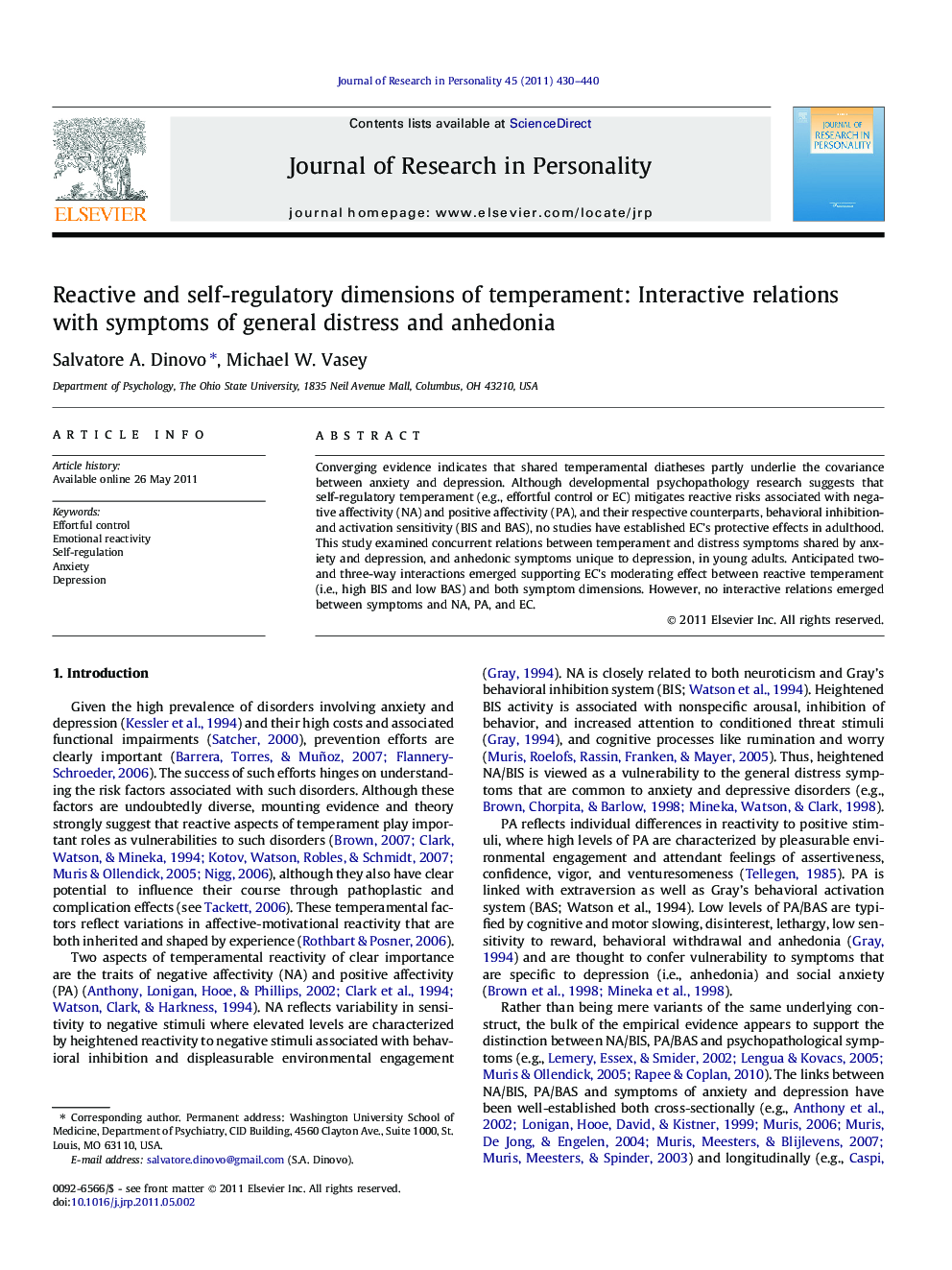| Article ID | Journal | Published Year | Pages | File Type |
|---|---|---|---|---|
| 951462 | Journal of Research in Personality | 2011 | 11 Pages |
Converging evidence indicates that shared temperamental diatheses partly underlie the covariance between anxiety and depression. Although developmental psychopathology research suggests that self-regulatory temperament (e.g., effortful control or EC) mitigates reactive risks associated with negative affectivity (NA) and positive affectivity (PA), and their respective counterparts, behavioral inhibition- and activation sensitivity (BIS and BAS), no studies have established EC’s protective effects in adulthood. This study examined concurrent relations between temperament and distress symptoms shared by anxiety and depression, and anhedonic symptoms unique to depression, in young adults. Anticipated two- and three-way interactions emerged supporting EC’s moderating effect between reactive temperament (i.e., high BIS and low BAS) and both symptom dimensions. However, no interactive relations emerged between symptoms and NA, PA, and EC.
► Results support extending risk model for internalizing symptoms to adults. ► Model consists of interacting reactive and self-regulatory temperament dimensions. ► Interactions between temperament dimensions produce anhedonia and/or distress. ► Reactive temperamental vulnerability is rarely sufficient for internalizing symptoms. ► Risks of reactive temperament highest with low self-regulation or effortful control.
